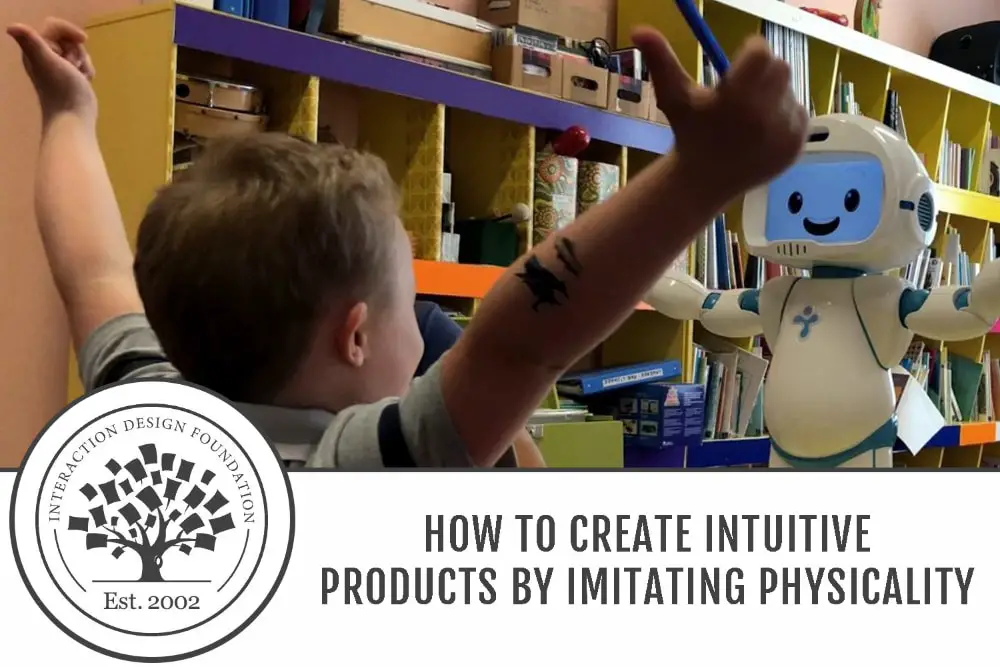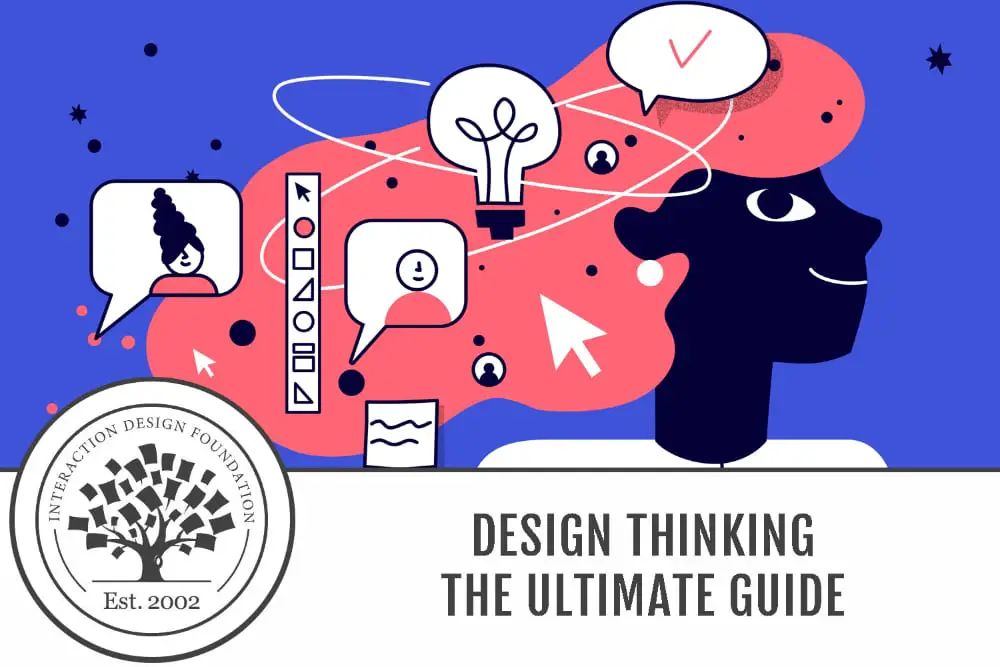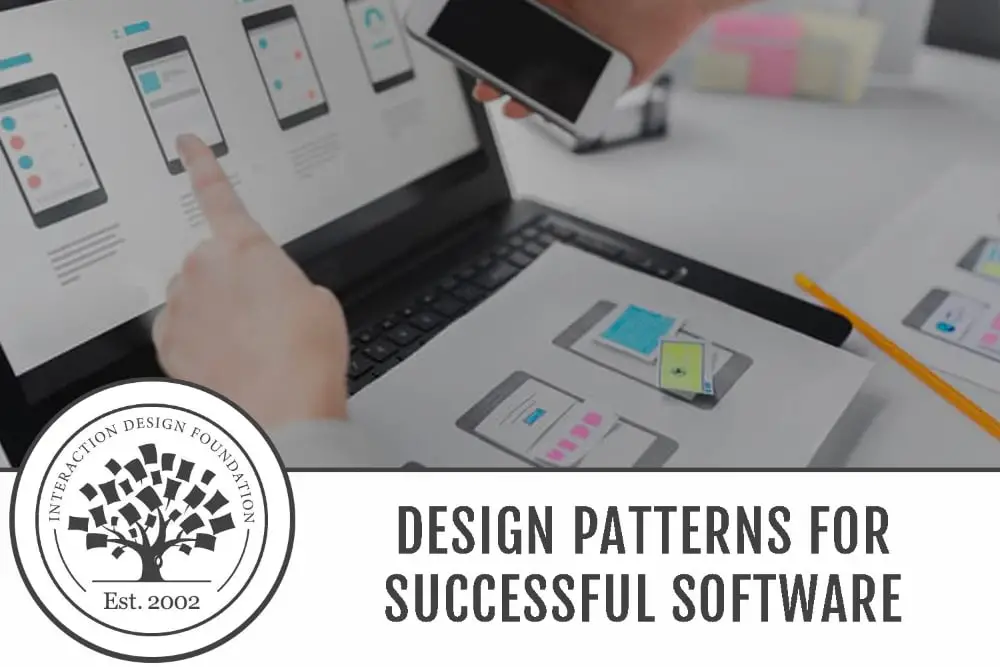Are you looking to advance your UX design skills or would like to get started in the UX industry? You’re about to discover the top-rated UX design courses and certificate programs online in 2022. Receiving certifications from the world’s largest and most accredited UX design school will set you apart from others and that’s why we’ve chosen to highlight only 15 of the best UX design courses online from IxDF – known as “Interaction Design Foundation”.
How will the UX design courses online from IxDF help me?

The IxDF courses will help you dive deeper into the field of UX Design by:
- Learning from professionals to enhance your skills
- Get more design projects
- Build valuable credibility
- Establish a network with other designers
- Provide confidence and a sense of achievement
- And ultimately – Increase your income
Learning about UX design by consuming dozens of UX ebooks and practicing with various software programs can only take one’s knowledge so far. With the materials enclosed in the courses that IxDF offers, along with the help of expert instructors, you can take your UX skills to the next level.
Again, if you’re interested in pursuing a career in UX design or just need to increase your UX knowledge, you’re heading in the right direction at this very moment. Taking these recommended UX courses online from IxDF will make a tremendous difference in helping you be recognized as a professional UX designer, gaining respect and recognition among your peers.
Top 15 Best UX Design Courses Online in 2022
Now that you have reviewed some of the important aspects of the UX design industry, along with the benefits of taking a UX course, it’s time to look at the top 15 best UX design courses online that IxDF has to offer you.
1. Web Design for Usability

Level: Beginner
UX Course Certificate: Yes
Estimated Time: 17 hours 12 mins over 9 weeks
Are you considering a UX course centered on web design? If you are, then we would highly recommend you consider the Web Design for Usability course from IxDF. Taught by the company’s founder and principal consultant, William Hudson, this course covers everything you need to know about designing user-friendly websites. It is comprehensive and evidence-based.
With over 40 years of experience in the development of interactive systems, Hudson is a leading expert in UX design. In this course, he’ll share his wealth of knowledge with you, covering user-centered design principles, usability testing methods, and more. By the end of the course, you’ll have a solid understanding of how to design user-friendly and effective websites.
This course would be well suited for:
- Small business owners building their own website
- A freelance designer building multiple websites
- Professional web developers who work for an agency
- An employee who is part of an in-house web design team
- A beginner who wants to invest in the best training to start a UX Design career related to web design.
This course is perfect for those who need to learn how to design an effective site that will lead potential customers and users to the end goal with a smile on their faces. No matter if you’re building a site for your hand-made goods or you’re a developer managing a large e-commerce portfolio for a client, then this course would be the right choice.
What You Will Learn:
- Core principles of user-centered design and how they can help improve your design usability
- Evaluate alternative designs based on their effectiveness and usability
- Significance of clear models and steps for getting the early design right
- Concept of involving users at an early stage in the design process
- Basic usability and accessibility guidelines to apply to all your designs
2. How to Create a UX Portfolio

Level: Beginner
UX Course Certificate: Yes
Estimated Time: 12 hours 57 mins over 4 weeks
The course covers everything you need to know on “How To Create a UX Portfolio” and how to land your dream UX job. You will learn about the different UX job roles and how to choose the one that is right for you.
One area of valuable knowledge you will gain is how to create case studies for your portfolio and navigate non-disclosure agreements. Plus, the course will teach you how to create visuals for your UX case studies to make them stand out.
What You Will Learn:
- Creating your UX portfolio from the start
- Receive 8 effective writing tips and 10 very useful portfolio templates
- The dos and do not’s of UX portfolio building
- Right UX tools you need to use to create the portfolio
- Create effective case studies to showcase your portfolio in a better way
- How to engage recruiters using Freytag’s dramatic structure
- Landing a good job using the UX portfolio
3. How to Create Intuitive Products by Imitating Physicality

Level: Advanced
UX Course Certificate: Yes
Estimated Time: 9 hours 3 mins over 2 weeks
The course starts with an introduction to UX design and discusses the different aspects of UX design, including user research, interaction design, visual design, and usability testing. After taking this course, students will be able to apply the UX design process to create intuitive and user-friendly products.
The main purpose of this course is to teach how to imitate physicality in the design of digital products. This is an important aspect of creating products that users will love.
Note: This course is an advanced-level course and it’s recommended for anyone who is already involved in product design and development processes.
What You Will Learn:
- Understanding physicality and how it can affect the design
- How to design keeping the physicality perspective in mind
- The concept of “physicality” in time and space
- Incorporating feedback to improve your designs
4. Conducting Usability Testing

Level: Intermediate
UX Course Certificate: Yes
Estimated Time: 10 hours 33 mins over 3 weeks
If you want to learn how to conduct effective usability testing, you should consider taking the UX Design Course online on Conducting Usability Testing offered by Interaction Design Foundation. In this course, you will learn how to configure a usability test and set test goals, build a usability test plan using best practices, carry out a usability test smoothly and effectively by avoiding common mistakes, and report findings.
As a UX Designer, it is important to test your designs to ensure effectiveness and efficiency continually. This course is perfect for anyone who wants to learn more about UX design or conduct usability tests for their business.
What You Will Learn:
- What is a usability test and how to set the right test goals
- Best practices for building the perfect usability test plan
- The common mistakes that designers make while conducting a usability test
- Generating comprehensive reports capturing the test observations
- Deriving vital feedback from tests and implementing them back into the design
5. Design Thinking: The Ultimate Guide

Level: Beginner
UX Course Certificate: Yes
Estimated Time: 26 hours 35 mins over 8 weeks
Design thinking is a powerful tool that can create more user-friendly, innovative products and services.
Design is a human-centered approach that begins with understanding the needs of users. The UX design course online on design thinking will help you and your team develop practical and innovative solutions for your problems. The course is divided into three parts – Understanding Design Thinking, UX Design Process, and UX Design Tools and Methods.
What You Will Learn:
- Use of design thinking to solve problems and generate innovative and user-based solutions
- Inculcating practical design thinking methods in every stage of your process
- How to establish a set of processes that are centered on user needs
- Employing ethnographic and analysis methods for social listening
- Art of prototyping to derive to final product quickly and efficiently
6. How to Become a Freelance UX Designer

Level: Intermediate
UX Course Certificate: Yes
Estimated Time: 21 hours 50 mins over 7 weeks
If you want to learn how to become a self-employed freelance UX designer, this UX design course online is perfect. The course will share the right information regarding how you can set up your freelancing work or even start your design agency if you wish to.
Working as a freelancer has a lot of positives and you can make the most of them provided you are getting success in the work you are doing. From branding yourself to creating the right set of case studies and portfolios, this course will cover many other topics like finding the right job, giving the right quote, and even how to handle clients. You will get better at the daily functions of a freelancer which will help you boost your efficiency and earn more.
What You Will Learn:
- How to set up a successful freelance business, starting from finding clients to setting your rates and managing your finances
- How to effectively sell your services to succeed as a freelancer
- Day-to-day management of your freelance business, including project management, time management, and dealing with difficult clients.
- Basics of UX design like user research, wireframing, and usability testing.
- Finer topics like building a strong portfolio, networking, and continuing to learn and evolve your skills.
7. Dynamic User Experience: Design and Usability

Level: Advanced
UX Course Certificate: Yes
Estimated Time: 17 hours 16 mins over 8 weeks
This specific UX design course will give you a thorough understanding of Ajax (Asynchronous Javascript and XML) and its uses. The majority of websites contain a lot of static content which hampers user experience. This course can help you identify which static content part can be changed to dynamic content. This will help you make the website more engaging. Going forward, you will be in a better position to balance usability, aesthetics, and accessibility.
The best part of the course is that you do not need to have technical knowledge of Ajax or other coding languages. The course is taught by William Hudson, the founder and principal consultant of Syntagm, a writer and teacher in user-centered design, user experience, and usability. The course is based on evidence-based approaches and solid evidence distilled from over 40 years of experience in the development of interactive systems.
What You Will Learn:
- Improving static web designs by deploying dynamic website content
- Dealing with touch-screen devices and making the UX better for them
- Making web pages more interactive and engaging for users
- Concepts of progressive enhancement and graceful degradation
- Learn to gather feedback and use that for tweaking the UX
8. UX Management: Strategy and Tactics

Level: Intermediate
UX Course Certificate: Yes
Estimated Time: 28 hours 32 mins over 6 weeks
Managing UX is about ensuring that the users have a positive experience throughout their product use. This course focuses on guiding you about the entire process of developing and managing the process of UX. Irrespective of your position in the organization, you will be able to contribute in the best possible way.
The course covers everything you need to know about UX management, from strategy to tactics. The course is taught by experts in the field who are working in esteemed positions like Chief Experience Officer or User Research Director in reputed organizations. Upon completing the course, you’ll have the knowledge required to manage UX across organizations effectively.
What You Will Learn:
- How to build a strong and competent UX team
- Best practices about managing and up-skilling the existing UX team for better output
- Hacks to propel the growth of your UX design agency
- Connecting the UX teamwork with the firm’s ROI and thereby enhancing the value
- Brand management of your UX design agency and communicating your value proposition with clarity
9. Design Patterns for Successful Software

Level: Beginner
UX Course Certificate: Yes
Estimated Time: 24 hours 22 mins over 8 weeks
This UX design course online will guide you through the process of selecting and implementing user interface design patterns to create successful software. You’ll learn about current terminology used in UX design, key concepts affecting UI display methods, and how to solve common design problems.
By learning more about the design patterns and their implications, you will be able to come up with the best possible design. By the end of the course, you’ll be equipped with the knowledge necessary to choose the most appropriate display methods and achieve maximum usability for your software project.
What You Will Learn:
- Choosing user interface design patterns and applying them in the best possible manner
- Increasing usability by organizing content in a structured manner
- Minimizing the user’s efforts when interacting with the product
- Make data entry simpler and error-proof
- Understanding social aspects and applying them to the user interface designs
10. Journey Mapping

Level: Beginner
UX Course Certificate: Yes
Estimated Time: 9 hours 57 mins over 6 weeks
Journey mapping is a critical aspect of UX design. Designers should always remember the journey mapping principles are relevant to any design. This course will provide you with practical methods that you can start using immediately in your design projects and downloadable templates that can give you a head start in your journey mapping projects.
This UX design course online will empower you with the foundational knowledge about journey mapping after which you will be able to break down the complex design elements into simple and easy-to-use elements which the customer will enjoy engaging with. Be it sign-up forms or the online shopping process, you will be able to create the right journey maps that will provide a very positive user experience to the customers.
What You Will Learn:
- The importance of journey mapping and how top design teams use it
- Identifying the ideal journey mapping process to fit your needs
- Gathering the right data sets as part of your journey mapping process
- Concept of Perspective Grid Data Analysis and its use
- Creating various journey maps like experience maps, customer journey maps, and service blueprints
11. Become a UX Designer from Scratch

Level: Beginner
UX Course Certificate: Yes
Estimated Time: 17 hours 25 mins over 6 weeks
Are you considering a UX design career and not sure where to start? We would recommend taking this course first.
You will learn about the five main stages of the user experience. You will learn why the UX profession is important and how it can extremely benefit many businesses and organizations.
UX has a vital impact on other areas of design which consist of UI design, graphic design, and web design. Having a clear understanding of the UX processes will increase any efforts that you put into those other areas. Additionally, you will learn the various UX design roles within an organization, and how to create UX deliverables such as personas, customer journey maps, prototypes, and more.
Here are the five stages of the design thinking process that you will understand after completing this course.
- Empathize
- Define
- Ideate
- Prototype
- Test
By the end of this course, you will have the skills and confidence to begin working as a professional UX designer.
What You Will Learn:
- Foundational knowledge about the core areas of user experience
- Organizational role of a UX designer
- Practical knowledge of creating good UX deliverables like creating personas, customer journey maps, prototypes, and other elements
- Understanding and using the five stages of the design thinking process: empathize, define, ideate, prototype, and test
- Create a visually enriching UX portfolio that can help you get UX designing jobs
12. Affordances: Designing Intuitive User Interfaces

Level: Advanced
UX Course Certificate: Yes
Estimated Time: 15 hours 46 mins over 5 weeks
Not many UX designers would have a full understanding of affordances and their significance in UX design. This is where this UX Design course will be very helpful.
You will learn many things about intuitive user interfaces including:
- How each element of your design affects the user experience with a realistic point of view
- Have empathy for your users and understand the potential challenges they will face when using your interface.
Along with learning about affordances, you will get to learn more about human-computer interactions. These insights will help you design better and generate positive user responses. This course will give you a solid foundation in UX design principles and help you create intuitive user interfaces that are easy to use and prevent user frustration.
What You Will Learn:
- The concept of affordance and how it is applied in the field of UX design
- Human-computer interaction and application of affordance in the same
- Concepts of visibility, find-ability, constraints, feedback, mapping, and other models to improve your product’s usability
- How to balance real and perceived affordances during the interface design setup
- Creating truly intuitive products which are very user friendly
13. Human-Computer Interaction – HCI

Level: Beginner
UX Course Certificate: Yes
Estimated Time: 17 hours 12 mins over 9 weeks
The foundation of user experience is based on the human-computer interaction (HCI) principles. HCI is a vast subject and a lot of research has been done in this field. As a UX designer, it is imperative that you know about HCI and its principles. This UX design course online will take you through all the concepts of HCI and their significance.
User-centered designs are a central focus of the “Human-Computer Interaction – HCI course.
This course contains videos created by Alan Dix an HCI specialist. Along with a comprehensive introduction to UX design principles and methods, the course will provide an in-depth look at HCI theory and practice. The assignments in the course will provide you with an opportunity to apply UX design concepts you learn in the real world.
What You Will Learn:
- Introduction to all aspects of the design process involved in creating interactive designs
- Different methods for the design process, navigation design, and screen design
- Concept and application of cognition and perception
- You will learn how human emotion can impact the design of a user interface
- Implementing windowing systems, applications, architectures, and frameworks
14. Agile Methods for UX Design Course

Level: Intermediate
UX Course Certificate: Yes
Estimated Time: 19 hours 19 mins over 6 weeks
This “Agile Methods for UX Design” course will teach you how to use the right agile methodologies to map your design. The good part about the course is that it is a fine balance between theory and the real-world implementation of agile, its different flavors, and how you can work with different versions of agile teams.
In this course, you will understand what agile is, why it was developed and how it can vary in different companies along with learning about common team structures and why it is easier to design within these environments.
What You Will Learn:
- What is agile and its significance in UX design?
- What are the common team structures in agile?
- What are the agile-related concepts, terminology, and tools?
- What are some of the agile patterns, anti-patterns, and variations of practices?
- How do you adjust your design and research processes to work more effectively within an agile environment?
15. Data-Driven Design: Quantitative Research for UX

Level: Beginner
UX Course Certificate: Yes
Estimated Time: 27 hours 22 mins over 8 weeks
This course is a practical guide that covers how to collect and analyze data to inform your UX design decisions. The course is led by William Hudson, an experienced UX designer and consultant with over 50 years of experience in software development. His wide experience in this field is well articulated along with that the tacit knowledge you will gather will be very helpful.
Developing a data-driven approach is a time-tested practice to ensure the success of your products. This course covers the basics of UX research methods and how to use data to inform your designs. You’ll learn how to collect data using surveys, interviews, and user testing and analyze that data to extract insights that can help improve your design decisions.
What You Will Learn:
- Difference between quantitative and qualitative research
- Importance of quantitive research and its various alternatives
- How to deploy a simple statistical analysis method in your project
- Various quantitative methods like surveys, early-design testing, app analytics, and A/B testing
- Analyzing your findings and presenting them in a structured manner
About Interaction Design Foundation – IxDF
Learn more about Interaction Design School
Interaction Design Foundation (IxDF) is the world’s largest online UX design school. It was founded in 2002 and today has catered to 127,537 graduates. Today the school has become one of the market leaders in online UX design education and its courses cover the entire spectrum of design, from the beginner stages to the more advanced professional level.
The IxDF certifications are trusted by large corporations such as IBM, Adobe, and GE. An interesting fact is that these companies train their teams with IxDF courses.
Another interesting fact is that major universities such as MIT and the University of Cambridge include IxDF course materials in their own curriculum.

This is an opportunity to take your UX design skills to the next level. If you want to learn about design thinking, user research, or usability in web design, the Interaction Design Foundation has a course designed for you.
The Benefits of Taking a UX Design Course Online
The benefits of taking a UX Design course online from IxDF can be significant. Below are listed several benefits and how you can quickly advance your skills.
1. Learn UX Design From The Best In The Industry
By taking UX courses online from IxDF, you can learn from some of the best in the industry and many of the UX professionals associated with IxDF are happy to share their knowledge with others.
2. Stay Up-To-Date With The Latest Trends
The UX industry is constantly changing and evolving. The IxDF UX design courses can ensure that you’re always up-to-date with the latest trends that will impact your career.
3. Get Hands-On Experience
Some of the courses provided by IxDF offer a hands-on learning experience. This can be seen as an advantage over other job applicants when looking for a UX design job. Employers value the practical hands-on approach that IxDF provides its students. This gives the students a real-world experience in a testing environment.
4. You Can Learn New Techniques & Tools
Taking one of these courses online can also help you learn new industry-standard techniques and tools. This is important as today’s UX design tools like software, wireframes and applications change rapidly.
5. Significant Improvements To Your Portfolio
By taking UX courses online and adding them to your portfolio, you can show potential employers that you’re serious about User Experience design. This can help you stand out from other candidates and showcase your portfolio on your personal website.
6. Network With Other Designers
You will have the opportunity to meet and network with other UX designers. This can be a great way to find mentors, collaborate on projects, and even make some like-minded friends. Having a support group is always a benefit.
7. Receive US & Internationally Respected Certifications
After completing your course you will be awarded a certificate of completion that is respected Internationally and in the USA. The certification is accepted by numerous employers around the world and will help to identify you as an expert in your field.
Frequently Asked Questions:
#1 – What is UX design?
UX is short for User Experience and refers to a person’s overall experience when engaging with the interface of a digital asset like a website, software, applications, or any interface of a physical product such as mobile devices, electronics, appliances, etc.
The UX design process includes all aspects of the individual user’s journey with the item, from initial awareness to purchase and beyond. It’s important because it can have a major impact on how successful a product, service, or website will become. If users have a positive experience, they are more likely to continue using the product, service, or site and recommend it to others.
On the other hand, if the user has a negative experience, they will likely abandon it and never come back. Investing in UX design knowledge can lead to positive results affecting users and ultimately increase sales and conversions.
By paying attention to the user experience, you can create products and services that users will love. It’s essential to consider UX design at every stage of development, from the initial planning to post-launch.
For those who are considering a career change over to the UX design industry, let’s briefly take a moment to look at some incredible industry statistics and salary data.
#2 – What are the benefits of Taking a UX design course online?
There are many benefits and here are just a few:
- Economic Subscription Model: The Interaction Design Foundation offers a wide range of courses with a subscription model. This means that you have the option of paying a low monthly fee or an annual fee.
- Learn From Anywhere in The World: You can access your UX design course materials from anywhere in the world with an internet connection. This is great if you travel often or don’t have a fixed schedule.
- You Can Learn at Your Own Pace: One of the benefits of taking a UX design course online with IxDF is you can move along at your own pace. You never have to worry about missing a class and you can always go back to review the lessons after completing them. This is helpful if you need more time to understand a concept. Plus, you can skip ahead or take multiple courses at one time. Again, study at your own pace.
- Permanent Access to Course Material: After signing up for one of the IxDF courses you will be given permanent access to all the course materials.
- Online Lessons with Optional Meet-Ups: Interaction Design Foundation offers online lessons with optional meet-ups. This means that you can learn at your own pace and network with other UX designers if you choose to.
- Learn on Any Device: The Interaction Design Foundation courses online can be accessed from any device enabling you to learn even on the go.
#3 – Is a UX design career path worth it?
Absolutely. For those of you looking to make the switch from web design to UX design, you’ll be pleasantly surprised by the outlook of this worthwhile career path and how easy it is to make the switch over.
Some may say the UX profession is a relatively new field with its beginnings in the 1950s. However, due to such rapid technological advancements, the UX profession grew from 1,000 known UX professionals to over 1 million between 1983 and 2017. That’s 1,000x.
The demand for UX designers boasts a projected growth of 22% over the next 10 years. Many traditional businesses have discovered the significant value in UX design and are looking to hire UX designers to help them create better products, services, and websites to ultimately create better user experiences.
#4 – What kind of salary can I expect to earn?
The salary of a UX designer can vary slightly depending on the region. However, the good news is that this fun and satisfying profession is lucrative with UX designers earning between 159,000 and 109,000 in the USA (mid to senior level). For many, that’s a significant salary that could help provide you and your family with a quality lifestyle.
#5 – Is UX design a rewarding and satisfying career?
As we stated above, the money is good, but you may be wondering if there is satisfaction from having a UX design career. You can view the comments over at www.interaction-design.org for testimonials regarding this and below is a quote on the IxDF website that put this question in perspective:
UX Design is deeply rewarding—you will discover infinite opportunities to improve and reinvent products that will enhance millions of lives.
Summary
Getting started with an online UX design course from IxDF can be one of the best decisions you make, given how it will enhance your professional skills provided by the world’s top educator.
Five Points To Remember:
- Make sure a reputable body accredits the course.
- Ensure the curriculum covers the topics you wish to learn.
- Check if an experienced and qualified instructor teaches the course.
- See if the course offers any downloadable project files that can help you practice.
- Find out what kind of support is available after you complete the course.
The UX Design courses online collated in this article are very comprehensive and some of the best online courses available in the world. You can go through the components of each of the topics and select the one that best suits your learning needs. With Interaction Design Foundation, you need not worry about the course’s quality or validation. Browse through the courses and enroll in one today.



Hi !! Thanks for sharing such an informative article about UX design.
Hi !! Thanks for sharing such informative article about UX design. You have literally covered all the pain points of a learner who wants to know about UX Design in deep.